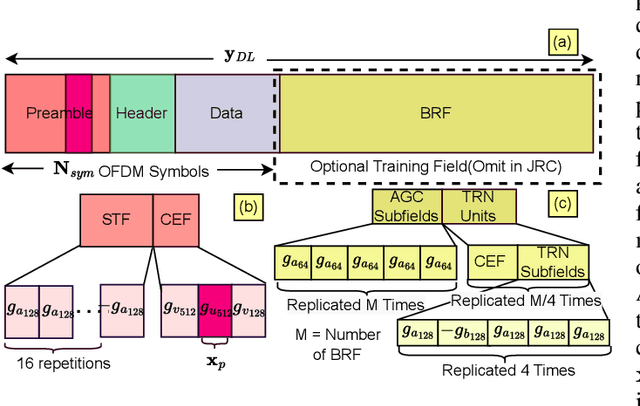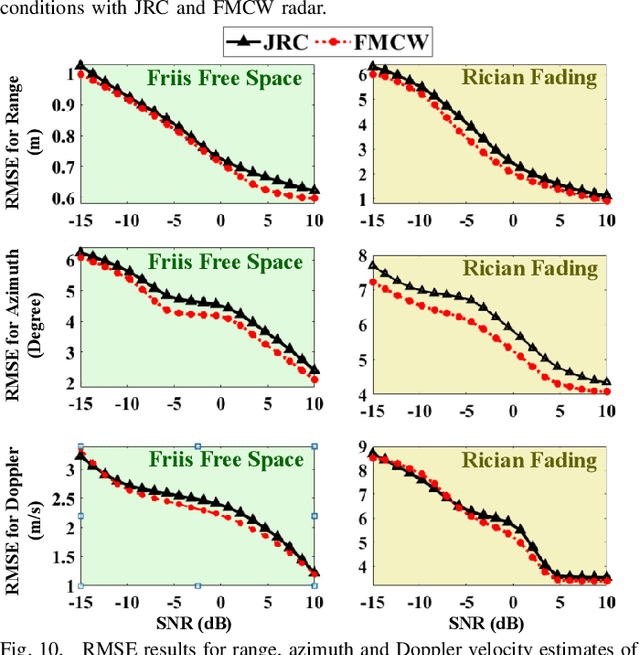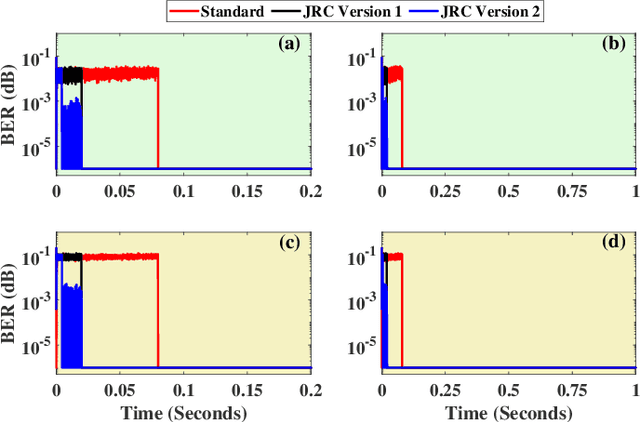Sumit Darak
Low Complexity High Speed Deep Neural Network Augmented Wireless Channel Estimation
Nov 15, 2023Abstract:The channel estimation (CE) in wireless receivers is one of the most critical and computationally complex signal processing operations. Recently, various works have shown that the deep learning (DL) based CE outperforms conventional minimum mean square error (MMSE) based CE, and it is hardware-friendly. However, DL-based CE has higher complexity and latency than popularly used least square (LS) based CE. In this work, we propose a novel low complexity high-speed Deep Neural Network-Augmented Least Square (LC-LSDNN) algorithm for IEEE 802.11p wireless physical layer and efficiently implement it on Zynq system on chip (ZSoC). The novelty of the LC-LSDNN is to use different DNNs for real and imaginary values of received complex symbols. This helps reduce the size of DL by 59% and optimize the critical path, allowing it to operate at 60% higher clock frequency. We also explore three different architectures for MMSE-based CE. We show that LC-LSDNN significantly outperforms MMSE and state-of-the-art DL-based CE for a wide range of signal-to-noise ratios (SNR) and different wireless channels. Also, it is computationally efficient, with around 50% lower resources than existing DL-based CE.
Radar Enhanced Multi-Armed Bandit for Rapid Beam Selection in Millimeter Wave Communications
Jun 29, 2023Abstract:Multi-arm bandit (MAB) algorithms have been used to learn optimal beams for millimeter wave communication systems. Here, the complexity of learning the optimal beam linearly scales with the number of beams, leading to high latency when there are a large number of beams. In this work, we propose to integrate radar with communication to enhance the MAB learning performance by searching only those beams where the radar detects a scatterer. Further, we use radar to distinguish the beams that show mobile targets from those which indicate the presence of static clutter, thereby reducing the number of beams to scan. Simulations show that our proposed radar-enhanced MAB reduces the exploration time by searching only the beams with distinct radar mobile targets resulting in improved throughput.
IEEE 802.11ad Based Joint Radar Communication Transceiver: Design, Prototype and Performance Analysis
Sep 09, 2022



Abstract:Rapid beam alignment is required to support high gain millimeter wave (mmW) communication links between a base station (BS) and mobile users (MU). The standard IEEE 802.11ad protocol enables beam alignment at the BS and MU through a lengthy beam training procedure accomplished through additional packet overhead. However, this results in reduced latency and throughput. Auxiliary radar functionality embedded within the communication protocol has been proposed in prior literature to enable rapid beam alignment of communication beams without the requirement of channel overheads. In this work, we propose a complete architectural framework of a joint radar-communication wireless transceiver wherein radar based detection of MU is realized to enable subsequent narrow beam communication. We provide a software prototype implementation with transceiver design details, signal models and signal processing algorithms. The prototype is experimentally evaluated with realistic simulations in free space and Rician propagation conditions and demonstrated to accelerate the beam alignment by a factor of four while reducing the overall bit error rate (BER) resulting in significant improvement in throughput with respect to standard 802.11ad. Likewise, the radar performance is found to be comparable to commonly used mmW radars.
 Add to Chrome
Add to Chrome Add to Firefox
Add to Firefox Add to Edge
Add to Edge